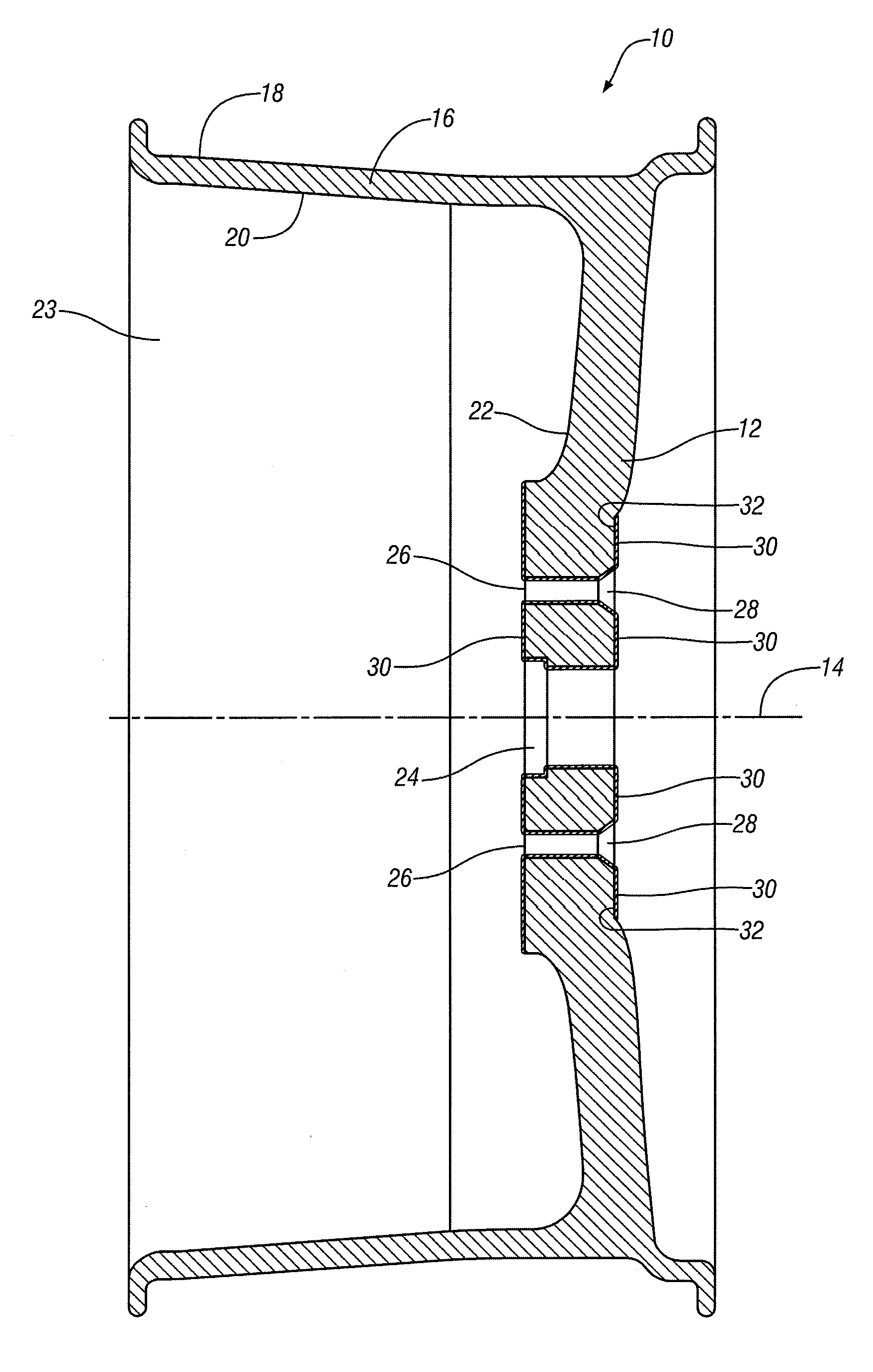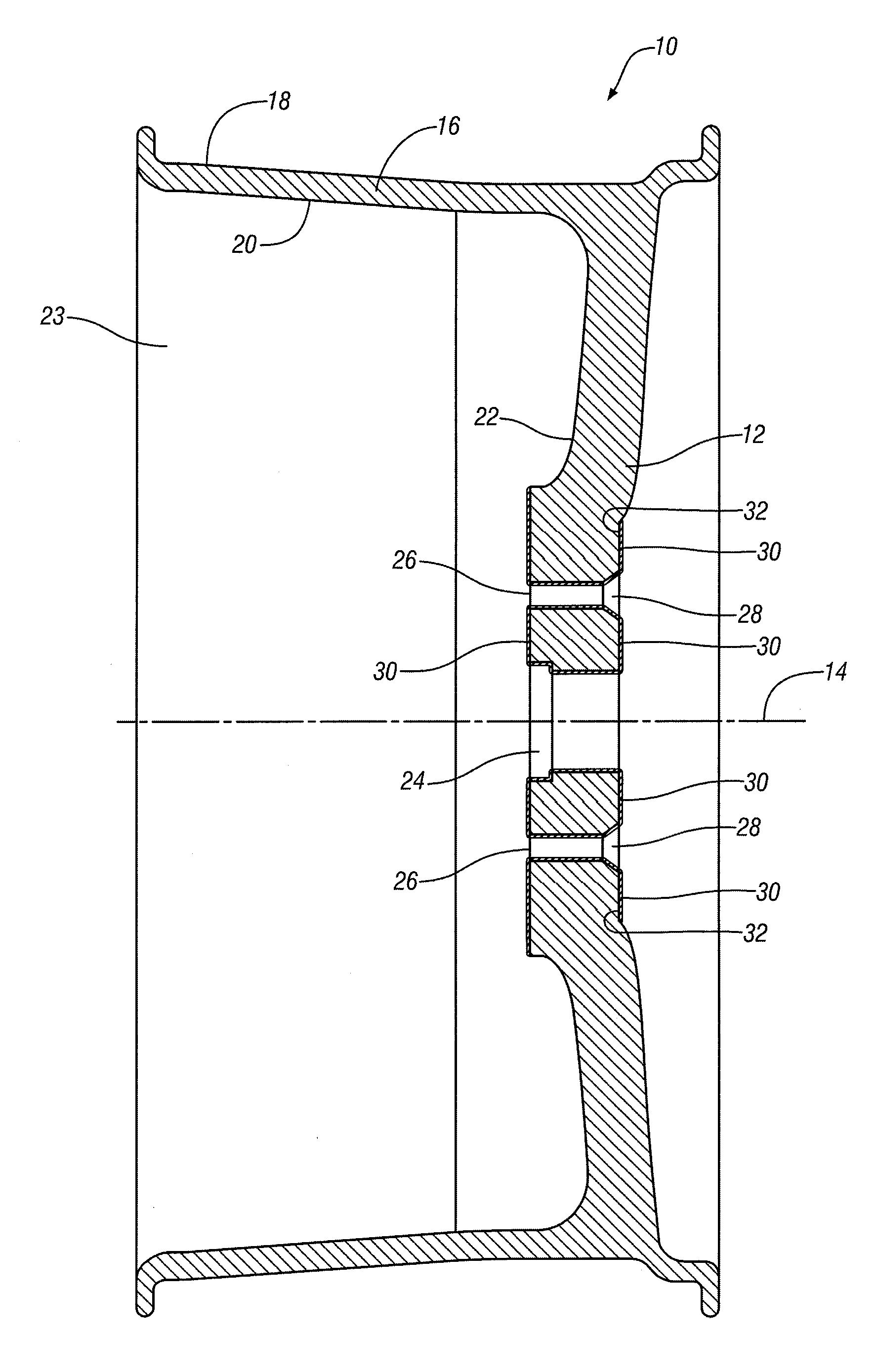Corrosion isolation of magnesium components
- Summary
- Abstract
- Description
- Claims
- Application Information
AI Technical Summary
Benefits of technology
Problems solved by technology
Method used
Image
Examples
Embodiment Construction
[0012]The drawing FIGURE shows a cross-sectional view of a vehicle wheel 10 which may be formed, for example, of a magnesium alloy formulated for casting or for forging. This includes, but is not limited to alloys such as AZ31B, AZ61A, AZ80A, ZK21, ZK31, ZK60, and ZM21.
[0013]Magnesium wheel 10 has a hub 12 that extends radially from the intended axis of rotation 14 of the wheel. Hub 12 terminates in a round circumferential rim 16. A pneumatic tire will typically be mounted on the radially exterior side 18 of rim 16. The radially interior side 20 of rim 16 and the inboard side 22 of wheel hub 12 define a space 23 to receive other vehicle wheel components (not shown in the FIGURE) when wheel 10 is mounted on a spindle or axle of a vehicle wheel system. In some vehicles wheel 10 may also be mounted to a wheel hub or to a brake rotor. In the illustrative example of the drawing FIGURE, hub 12 of wheel 10 has an axial hole 24 for the end of a wheel spindle (not shown in the FIGURE) and a ...
PUM
 Login to View More
Login to View More Abstract
Description
Claims
Application Information
 Login to View More
Login to View More - R&D
- Intellectual Property
- Life Sciences
- Materials
- Tech Scout
- Unparalleled Data Quality
- Higher Quality Content
- 60% Fewer Hallucinations
Browse by: Latest US Patents, China's latest patents, Technical Efficacy Thesaurus, Application Domain, Technology Topic, Popular Technical Reports.
© 2025 PatSnap. All rights reserved.Legal|Privacy policy|Modern Slavery Act Transparency Statement|Sitemap|About US| Contact US: help@patsnap.com


